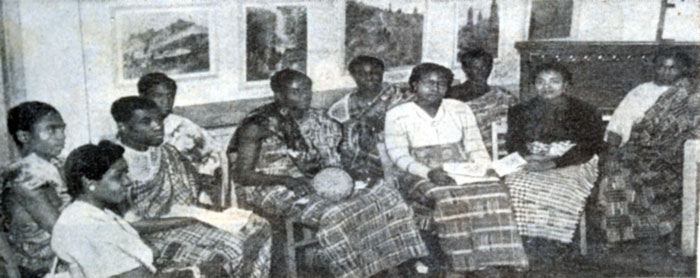
In 1859, Brighton School of Art opened with 110 pupils in two rooms off the kitchen of the Royal Pavilion. In 1877, this became Brighton School of Science and Art opened, based at Grand Parade. In 1897, it was renamed Municipal School of Art, later Brighton School of Art, while teaching begins at a new Municipal School of Science and Technology, home to 600 students, and in 1909 renamed the Brighton Municipal Training College.
During the First World War and Second World War, members of the armed forces undertook training at Brighton School of Art – these ranged from disabled soldiers based at Brighton Pavilion Hospital in 1917 to members of the US armed forces during the Second World War. When the British Empire was at the height of its power during the 1920s, Brighton School of Art students joined in with its associated propaganda efforts, for example playing a major role in Empire Week each year, with 70 of them participating in the pageant A Vision of Empire, which featured in the ‘Empire Dinner’ in Brighton Dome in 1925.
In 1934, E.A. Sallis Benney was appointed Principal of Brighton School of Art, and he envisioned Brighton becoming an international college of arts, going beyond borders, and international students soon established themselves as a presence. In January 1947, ‘Mr. Sallis Benney told the [Brighton and Hove Herald] that there is widespread conviction that when the world conditions become more stabilised the international reputation and influence of the college will be assured.’ In 1947, it was renamed Brighton College of Arts and Crafts and by now was one of the country’s leading centres of art. As the Evening News reported on 17 February 1947, ‘Brighton has become one of the most important art centres in the country. Students from all over the world, from South Africa and Holland and former underground workers in Norway, attend the already crowded College of Art’.
During the 1950s, Brighton became one of sixteen specialist centres for art teacher training in the country under leadership of Ronald Horton from 1944-1966, and students – including many international students – studied for an Art Teachers’ Certificate (ATC) at the Art Teacher Training Department. As Jonathan Woodham notes, ‘Students participated in a wide range of activities including oral history, theatre productions, music and written studies, all of them were acknowledged as part of the curriculum … ATC students … came from all over the world … including Africa, Ceylon, China, Cyprus, India, Pakistan and the West Indies, and significantly enriched the collective and individual experiences of the student body as a whole’.[1]
Chelsea College of Physical Education at Eastbourne
In 1949, Chelsea School, which had first opened in London in 1898 as an institution training women and girls in physical education, celebrated its fiftieth year by moving to Eastbourne, after being evacuated for a period in 1939 to Borth in Wales. The school became part of what was to become the University of Brighton in 1979, when the East Sussex College of Higher Education, which included what was now called Chelsea College of Physical Education, merged with Brighton Polytechnic.
[1] Jonathan M. Woodham, ‘Brighton School of Art: From Victorian origins to the 21st century’ in Philippa Lyon and Jonathan M. Woodham (eds.) Art and Design at Brighton, 1859-2009: From Arts and Manufactures to the Creative and Cultural Industries (Brighton, 2009), pp. 121, 125.
